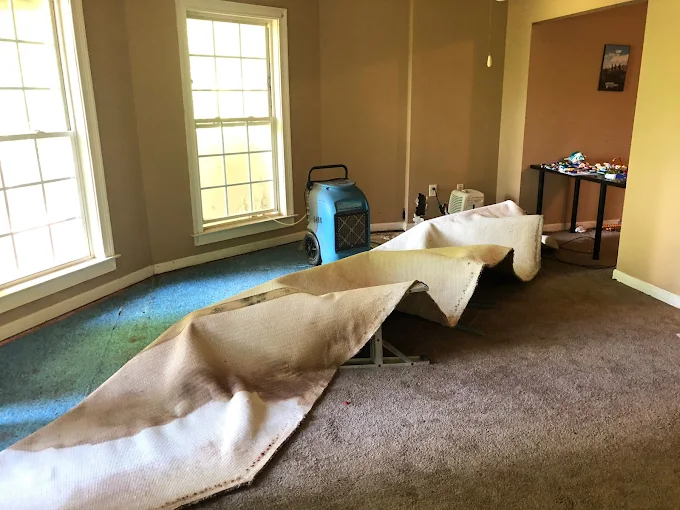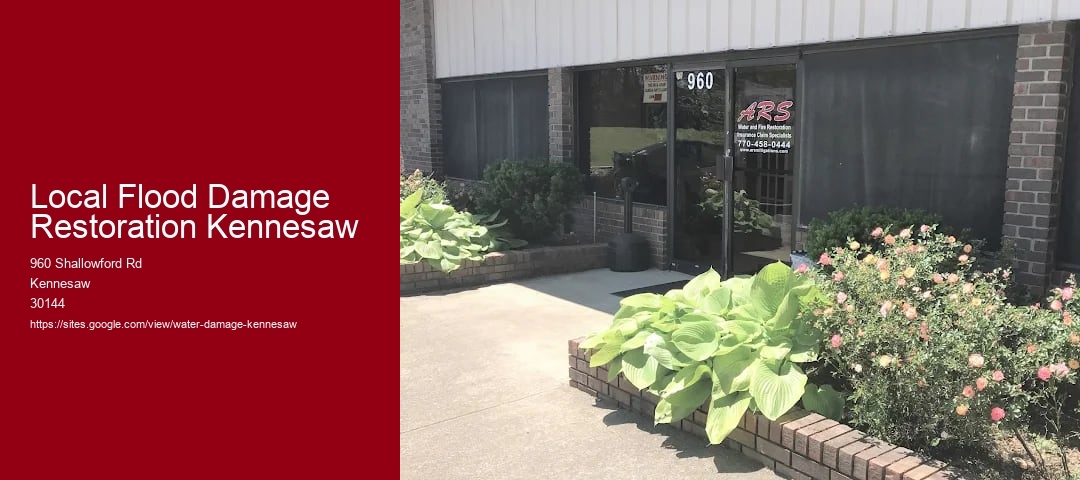Understanding the Causes of Flooding in Kennesaw
Understanding the causes of flooding in Kennesaw is crucial for effective local flood damage restoration efforts. Local Water Damage Restoration Kennesaw GA . Kennesaw, a city nestled in the heart of Georgia, is not immune to the challenges posed by flooding, which can wreak havoc on homes, businesses, and the environment. By comprehending the primary causes of flooding in this area, we can better prepare and mitigate the impact of these natural disasters.
One of the primary causes of flooding in Kennesaw is its geographical location and weather patterns. The city experiences substantial rainfall, particularly during the spring and summer months. Heavy rainstorms can quickly saturate the ground, leading to surface runoff when the soil can no longer absorb the excess water. This runoff often flows into rivers and streams, causing them to overflow their banks and inundate nearby areas.
Urbanization is another significant factor contributing to flooding in Kennesaw. As the city grows, more land is developed for residential, commercial, and industrial purposes. This development often involves the construction of impervious surfaces such as roads, parking lots, and buildings, which prevent water from being absorbed into the ground. Instead, rainwater accumulates on these surfaces, increasing the volume and speed of runoff, which can overwhelm drainage systems and exacerbate flooding.
Inadequate infrastructure is also a contributor to flooding in Kennesaw. Some areas may have outdated or insufficient drainage systems that are incapable of handling large volumes of water during heavy rains. This can lead to water pooling in streets and low-lying areas, causing localized flooding that can damage properties and disrupt daily life.
Additionally, climate change is playing an increasingly prominent role in the frequency and intensity of flooding events. Rising temperatures can lead to more intense and unpredictable weather patterns, including severe storms. These storms can bring heavy rainfall, overwhelming local waterways and drainage systems, thus increasing the risk of flooding.
Understanding these causes is essential for effective flood damage restoration in Kennesaw. By recognizing the interplay of natural and human-induced factors, local authorities and residents can implement strategies to reduce the impact of flooding. This can include investing in improved drainage infrastructure, promoting sustainable urban planning practices, and enhancing community awareness and preparedness for flood events.

In conclusion, flooding in Kennesaw is a complex issue influenced by natural weather patterns, urban development, infrastructure limitations, and climate change. By addressing these causes through informed planning and proactive measures, the community can mitigate the damage caused by floods and enhance its resilience against future flooding events. This understanding is vital for protecting the well-being of Kennesaws residents and the integrity of its environment.
Immediate Steps to Take After a Flood
Experiencing a flood can be an overwhelming and traumatic event for any community, and residents of Kennesaw are no exception. Floods can cause extensive damage to homes, businesses, and infrastructure, leaving individuals unsure of how to begin the recovery process. Taking immediate steps after a flood is crucial to ensure safety, minimize damage, and facilitate a smoother restoration process. Here are some key actions to consider following a flood in Kennesaw.
First and foremost, safety should be the primary concern. It is essential to avoid entering flooded areas until authorities have deemed them safe. Same Day Water Damage Kennesaw Georgia Floodwaters can hide a multitude of hazards, including electrical risks, sharp debris, and contamination. If evacuation was necessary, wait for the official go-ahead before returning home. Affordable Flood Mitigation Cobb County Once back, ensure that the power is turned off to prevent electrical shocks, especially if theres standing water in the vicinity.
Once safety is assured, documenting the damage becomes a critical step. Take photographs and videos of affected areas, including structural damage and any destroyed belongings. This documentation will be invaluable when filing insurance claims and seeking government assistance for flood recovery. Accurate records can expedite the claims process and help ensure that you receive the support needed to rebuild.

The next step involves removing water and drying out the property. This process is crucial to prevent mold growth, which can begin within 24 to 48 hours after a flood. Using pumps, wet vacuums, and dehumidifiers can help remove water and moisture from the property. Its often beneficial to enlist the help of professional local flood damage restoration services in Kennesaw, as they have the expertise and equipment to effectively mitigate water damage and restore the property to its pre-flood condition.
While drying out the property, its important to assess which items can be salvaged and which need to be discarded. Porous materials, such as carpets, mattresses, and upholstery, may need to be disposed of if they have been soaked in contaminated floodwater. Non-porous items, like glass and metal, can often be cleaned and disinfected. Its crucial to wear protective gear, such as gloves and masks, during this process to avoid exposure to potentially harmful substances.
Communication with insurance providers is another essential step in the post-flood process. Contact your insurance company as soon as possible to notify them of the flood and begin the claims process. Provide them with the documentation you have gathered, and be prepared to discuss the extent of the damage. Understanding your policy and coverage will help manage expectations and guide you through the financial aspects of recovery.
Finally, consider reaching out to local community resources and government agencies for assistance. Kennesaw may have resources available for flood victims, such as temporary housing, financial aid, or volunteer support for cleanup efforts. Engaging with community organizations can provide additional support and guidance during this challenging time.
In conclusion, while the aftermath of a flood can be daunting, taking immediate and organized steps can significantly aid in the recovery process. Prioritizing safety, documenting damage, and effectively communicating with insurance providers are critical components of flood damage restoration. By acting swiftly and utilizing available resources, residents of Kennesaw can navigate the challenges of flood recovery and work towards rebuilding their lives.

Professional Restoration Services Available in Kennesaw
Kennesaw, a vibrant city nestled in the heart of Georgia, is no stranger to the whims of nature. Mold Inspection and Cleaning Near Kennesaw While its climate is generally mild, the region occasionally faces severe weather conditions, leading to unexpected flooding. When disaster strikes, homeowners and businesses are often left grappling with the aftermath, including water damage that can disrupt daily life and cause significant structural harm. This is where professional restoration services come into play, offering a beacon of hope and a pathway to recovery for those affected by local flood damage in Kennesaw.
Flood damage restoration is a critical service that involves more than just removing water from a property. It encompasses a comprehensive approach to restoring a building to its pre-flood condition, ensuring the safety and well-being of its occupants. Professional restoration services in Kennesaw are equipped with the expertise and tools necessary to tackle the challenges posed by flood damage. These specialists understand the complexities of water removal, drying, dehumidification, and sanitization, which are essential steps in preventing further deterioration and potential health hazards.
One of the primary advantages of hiring professional restoration services is their ability to respond swiftly and efficiently to emergencies. Time is of the essence when dealing with flood damage, as prolonged exposure to water can lead to mold growth, structural weakening, and increased repair costs. Professionals in Kennesaw are available around the clock, ready to deploy their skills and state-of-the-art equipment to mitigate damage and initiate the restoration process immediately.
Moreover, these experts possess a deep understanding of the insurance claims process, which can be daunting for property owners unfamiliar with it. They can assist in documenting the damage and communicating with insurance companies, ensuring that claims are processed smoothly and efficiently. This guidance can alleviate the stress and confusion often associated with navigating the aftermath of a flood.
In addition to addressing the immediate concerns of water extraction and drying, professional restoration services in Kennesaw take a holistic approach to restoration. They conduct thorough inspections to identify hidden damage that might not be immediately visible, such as compromised electrical systems or weakened foundations. By addressing these issues, they ensure the long-term safety and stability of the property.
Furthermore, these services are committed to using environmentally friendly practices, minimizing the impact on the local ecosystem while restoring properties. They employ advanced techniques and eco-friendly products to clean and sanitize affected areas, promoting a healthy living environment for residents and businesses alike.
In conclusion, professional restoration services in Kennesaw play an indispensable role in helping the community recover from local flood damage. Their expertise, rapid response, and commitment to comprehensive restoration provide property owners with peace of mind and a sense of security during challenging times. By entrusting their homes and businesses to these skilled professionals, Kennesaw residents can rest assured that they are in capable hands, ready to restore their properties and return to normalcy as swiftly as possible.
Preventative Measures for Future Floods
Flooding poses a significant threat to communities worldwide, and Kennesaw is no exception. As climate change continues to alter weather patterns, the risk and frequency of floods have increased, making it crucial for local authorities and residents to adopt preventative measures aimed at minimizing future flood damage. By implementing a combination of infrastructure improvements, community planning, and public education, Kennesaw can enhance its resilience against flooding and protect its residents and their properties.
One of the most effective strategies for flood prevention is investing in infrastructure improvements. This includes the enhancement of drainage systems to ensure they can handle heavy rainfall and prevent water from accumulating in low-lying areas. Upgrading stormwater management systems, such as installing more efficient pipes and expanding retention basins, can significantly reduce the likelihood of flooding. Additionally, the construction of levees and flood walls in strategic locations can act as physical barriers, directing water away from vulnerable areas and minimizing damage.
Community planning also plays a vital role in flood prevention. Local authorities in Kennesaw can enforce zoning regulations that restrict development in flood-prone areas, ensuring that new buildings are constructed with elevated foundations and flood-resistant materials. By preserving natural floodplains and wetlands, the city can maintain natural water absorption areas that help mitigate flooding. Urban planners can also design green spaces and parks that double as flood buffers, absorbing excess water during heavy rains.
Public education is equally important in preventing flood damage. Educating residents about the risks associated with flooding and the steps they can take to protect their homes is crucial. Community workshops and informational campaigns can teach people how to prepare emergency kits, develop evacuation plans, and implement simple home modifications, such as installing flood barriers or using sandbags during severe weather events. Encouraging residents to purchase flood insurance can also provide financial protection and peace of mind.
Moreover, technological advancements offer new opportunities for flood prevention. Early warning systems using advanced weather forecasting can alert residents of impending floods, allowing them to take necessary precautions. The city can also utilize data analytics and geographical information systems (GIS) to identify flood-prone areas and assess the potential impact of various flood scenarios, enabling more effective planning and response strategies.
In conclusion, while flooding is a complex challenge, proactive and comprehensive preventative measures can significantly reduce the risk and impact of future floods in Kennesaw. By investing in infrastructure improvements, adopting thoughtful community planning, educating the public, and leveraging technology, the city can enhance its resilience and safeguard its residents and properties from the devastating effects of floods. Through collaborative efforts between local authorities, residents, and experts, Kennesaw can build a more flood-resilient community, ensuring a safer future for all.
